Exercise 6.3-Additional Questions - Chapter 6 - Two Dimensional Analytical Geometry - 11th Maths Guide Samacheer Kalvi Solutions
Updated On 26-08-2025 By Lithanya
You can Download the Exercise 6.3-Additional Questions - Chapter 6 - Two Dimensional Analytical Geometry - 11th Maths Guide Samacheer Kalvi Solutions with expert answers for all chapters. Perfect for Tamil & English Medium students to revise the syllabus and score more marks in board exams. Download and share it with your friends
Share this to Friend on WhatsApp
Additional Questions
Question 1.
Find the equation of the line passing through the point $(5,2)$ and perpendicular to the line joining the points $(2,3)$ and $(3,-1)$.
Solution:
Slope of the line joining the points $(2,3)$ and $(3,-1)$ is
$
\frac{-1-3}{3-2}=-4
$
Slope of the required line which is perpendicular to it
$
=\frac{-1}{-4}=\frac{1}{4} \quad\left[\because m_1 m_2=-1\right]
$
Equation of the line passing through the point $(5,2)$ is
$
\begin{array}{rlrl}
y-2 & =\frac{1}{4}(x-5) & {\left[y-y_1=m\left(x-x_1\right)\right]} \\
\Rightarrow & & 4 y-8 & =x-5 \\
\Rightarrow & x-4 y+3 & =0
\end{array}
$
Hence, the required equation is $x-4 y+3=0$.
Question 2.
Find the points on the line $x+y=4$ which lie at a unit distance from the line $4 x+3 y=10$.
Solution
Let $\left(x_1, y_1\right)$ be any point lying in the equation $x+y=4$
$
\therefore \quad x_1+y_1=4
$
Distance of the point $\left(x_1, y_1\right)$ from the equation $4 x+3 y=10$
$
\begin{aligned}
\frac{4 x_1+3 y_1-10}{\sqrt{(4)^2+(3)^2}} & =1 \\
\left|\frac{4 x_1+3 y_1-10}{5}\right| & =1 \\
4 x_1+3 y_1-10 & = \pm 5
\end{aligned}
$
Taking $(+) \operatorname{sign} \quad 4 x_1+3 y_1-10=5$
$
\Rightarrow \quad 4 x_1+3 y_1=15
$
From equation $(i)$ we get $y_1=4-x_1$
Putting the value of $y_1$ in equation (ii) we get
$
\begin{array}{rlrl}
& & 4 x_1+3\left(4-x_1\right) & =15 \\
\Rightarrow & 4 x_1+12-3 x_1 & =15 \\
\Rightarrow & x_1+12 & =15 \\
\Rightarrow & x_1 & =3 \text { and } y_1=4-3=1
\end{array}
$
So, the required point is $(3,1)$
Now taking(-) sign, we have
$
\begin{aligned}
& 4 x_1+3 y_1-10=-5 \\
& \Rightarrow \quad 4 x_1+3 y_1=5 \\
& \Rightarrow \quad 4 x_1+3\left(4-x_1\right)=5 \\
& \Rightarrow \quad 4 x_1+12-3 x_1=5 \\
& \Rightarrow \quad x_1=5-12=-7 \\
& \text { and } y_1=4-(-7)=11 \\
&
\end{aligned}
$
So, the required point is $(-7,11)$
Hence, the required points on the given line are $(3,1)$ and $(-7,11)$.
Question 3 .
Find the equation of the line passing through the point of intersection $2 x+y=5$ and $x+3 y+8=0$ and parallel to the line $3 x+4 y=7$.
Solution:
Given that:
$
\begin{array}{r}
2 x+y=5 \\
x+3 y+8=0 \\
3 x+4 y=7
\end{array}
$
Equation of any line passing through the point of intersection of equation $(i)$ and (ii) is
$
\begin{aligned}
(2 x+y-5)+\lambda(x+3 y+8) & =0 \\
\Rightarrow \quad 2 x+y-5+\lambda x+3 \lambda y+8 \lambda & =0 \\
\Rightarrow \quad(2+\lambda) x+(1+3 \lambda) y-5+8 \lambda & =0 \\
\quad \text { Slope of line } m_1 \text { (say) } & =\frac{-(2+\lambda)}{1+3 \lambda} \quad\left[\because m=\frac{-a}{b}\right]
\end{aligned}
$
Now slope of line $3 x+4 y=7$ is
$
m_2 \text { (say) }=-\frac{3}{4}
$
If equation (iii) is parallel to equation (iv) then $m_1=m_2$
$
\begin{array}{ll}
\Rightarrow & \frac{-(2+\lambda)}{1+3 \lambda}=-\frac{3}{4} \\
\Rightarrow & \frac{2+\lambda}{1+3 \lambda}=\frac{3}{4} \Rightarrow 8+4 \lambda=3+9 \lambda \\
\Rightarrow & 9 \lambda-4 \lambda=5 \Rightarrow 5 \lambda=5 \Rightarrow \lambda=1
\end{array}
$
On putting the value of $\lambda$ in equation (iv) we get
$
\begin{aligned}
& (2 \mathrm{x}+\mathrm{y}-5)+1(\mathrm{x}+3 \mathrm{y}+8)=0 \\
& \Rightarrow 2 \mathrm{x}+\mathrm{y}-5+\mathrm{x}+3 \mathrm{y}+8=0
\end{aligned}
$
$
\Rightarrow 3 x+4 y+3=0
$
Hence, the required equation is $3 x+4 y+3=0$
Question 4.
A line passing through the points (a, 2a) and $(-2,3)$ is perpendicular to the line $4 x+3 y+5=0$, find the value of a.
Solution:
Let $m_1$ be the slope of the line joining A $(a, 2 a)$ and $\mathrm{B}(-2,3)$. Then $m_1=\frac{2 a-3}{a+2}$
Let $m_2$ be the slope of the line $4 x+3 y+5=0$. Then $m_2=-\frac{4}{3}$ Since given lines are perpendicular. Therefore,
$
m_1 m_2=-1 \Rightarrow \frac{2 a-3}{a+2} \times-\frac{4}{3}=-1 \Rightarrow 8 a-12=3 a+6 \Rightarrow a=18 / 5
$
Question 5.
Find the equation of the straight line which passes through the intersection of the straight lines $2 x+y=8$ and $3 x-2 y+7=0$ and is parallel to the straight line $4 x+y-11=0$.
Solution:
Equation of line through the intersection of straight lines
$2 x+y=8$ and $3 x-2 y+7=0$ is
$2 \mathrm{x}+\mathrm{y}-8+\mathrm{k}(3 \mathrm{x}-2 \mathrm{y}+7)=0$
$\mathrm{x}(2+3 \mathrm{k})+\mathrm{y}(1-2 \mathrm{k})+(-8+7 \mathrm{k})=0$
Then $m_1=-\left(\frac{2+3 k}{1-2 k}\right)$
This is parallel to $4 x+y-11=0$
Then $m_2=-\left(\frac{4}{1}\right)$
$\therefore$ Their slopes are equal $\Rightarrow m_1=m_2$
$
-\left(\frac{2+3 k}{1-2 k}\right)=-\left(\frac{4}{1}\right)
$
$
\begin{aligned}
\frac{2+3 k}{1-2 k} & =4 \\
2+3 k & =4-8 k \\
11 k & =2 \Rightarrow k=\frac{2}{11}
\end{aligned}
$
Required equation is $x\left(2+\frac{6}{11}\right)+y\left(1-\frac{4}{11}\right)+\left(-8+\frac{14}{11}\right)=0$
$
\begin{aligned}
& \frac{28 x}{11}+\frac{7 y}{11}-\frac{74}{11}=0 \\
& \Rightarrow 28 x+7 y-74=0 \\
& \Rightarrow 28 x+7 y-74=0
\end{aligned}
$
Question 6
Find the equation of the straight line passing through intersection of the straight lines $5 x-6 y=1$ and $3 x$ $+2 y+5=0$ and perpendicular to the straight line $3 x-5 y+11=0$.
Solution:
Equation of line through the intersection of straight lines $5 x-6 y=1$ and $3 x+2 y+5=0$ is $5 \mathrm{x}-6 \mathrm{y}-1+\mathrm{k}(3 \mathrm{x}+2 \mathrm{y}+5)=0$
$\mathrm{x}(5+3 \mathrm{k})+\mathrm{y}(-6+2 \mathrm{k})+(-1+5 \mathrm{k})=0$
This is perpendicular to $3 x-5 y+11=0$
That is, the product of their slopes is -1
$
\begin{aligned}
-\left(\frac{5+3 k}{-6+2 k}\right)\left(-\frac{3}{-5}\right) & =-1 \\
\Rightarrow \frac{15+9 k}{-30+10 k} & =1 \\
\Rightarrow 15+9 k & =-30+10 k \\
45 & =k
\end{aligned}
$
Required equation is $5 x-6 y-1+45(3 x+2 y+5)=0$
$
\begin{aligned}
5 x-6 y-1+135 x+90 y+225 & =0 \\
140 x+84 y+224 & =0 \\
20 x+12 y+32 & =0 \\
5 x+3 y+8 & =0
\end{aligned}
$




